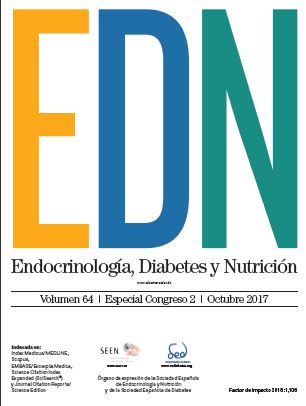57 - HEPATIC INSULIN SENSITIVITY EARLY AFTER THE BYPASS OF THE PROXIMAL SMALL BOWEL ASSESSED BY THE HYPERINSULINEMIC EUGLYCAEMIC CLAMP
aSection of Investigative Medicine. Division of Diabetes, Endocrinology & Metabolism. Imperial College London. London. UK. bCedar Centre Royal Surrey. County Hospital Guildford. Surrey. UK. cUniversity of Glasgow. Glasgow. UK. dDiabetes and Metabolic Medicine. Faculty of Health and Medical Sciences. University of Surrey. Guildford. UK. eDiabetes Complications Research Centre. UCD Conway Institute. University College Dublin. Dublin. Ireland. fCentre for Neuropsychopharmacology, Computational, Cognitive and Clinical Neuroimaging Laboratory. Division of Brain Sciences. Imperial College London. London. UK. gHepatobiliary and Minimal Access Surgery. King's College Hospital NHS Foundation Trust. London. UK. hSection of Investigative Medicine. Division of Diabetes, Endocrinology and Metabolism. Imperial College London. London. UK; Diabetes Complications Research Centre. UCD Conway Institute. University College Dublin. Dublin. Ireland.
Objectives: Unlike gastric banding or sleeve gastrectomy procedures, intestinal bypass procedures, Roux-en-Y gastric bypass in particular, lead to rapid improvements in glycaemia early after surgery. The bypass of the proximal small bowel may have weight loss and even caloric restriction-independent glucose-lowering properties on hepatic insulin sensitivity. In this first human mechanistic study, we examined this hypothesis by investigating the early effects of the duodeno-jejunal bypass liner (DJBL; GI Dynamics, USA) on the hepatic insulin sensitivity by using the gold standard euglycaemic hyperinsulinaemic clamp methodology.
Methods: Seven patients with obesity underwent measurement of hepatic insulin sensitivity at baseline, 1 week after a low-calorie liquid diet (LCD) (Fortisip® compact; 1,500 kCal d-1) and after a further 1 week following insertion of the DJBL whilst on the same diet. Statistical comparisons were made by using repeated measures one-way ANOVA with post hoc Newman–Keuls corrected pairwise comparisons which are shown when statistically significant.
Results: Mean ± SD age (years) was 52 ± 12. 71.4% were males. Mean ± SD Hba1c (mmol/mol (%)) was 53 ± 17 (7.2 ± 1.6) and BMI (Kg/m2) 48.5 ± 7.9. Hepatic glucose production during clamp (μmol/kg-1/min-1) at baseline, post LCD (visit 2) and post DJBL (visit 3) was 4.3 ± 1.3, 3.4 ± 1.4 and 3.8 ± 1.1 (p = 0.047). Therefore, DJBL did not improve the insulin sensitivity of hepatic glucose production beyond the improvements achieved with caloric restriction. Hypoglycaemia was not reported by any of our participants.
Conclusions: Our findings suggest that caloric restriction may be the predominant driver of early increases in hepatic insulin sensitivity after the endoscopic bypass of the proximal small bowel. The same mechanism may be at play after Roux-en-Y gastric bypass and explain, at least in part, the rapid improvements in glycaemia observed early after surgery.







